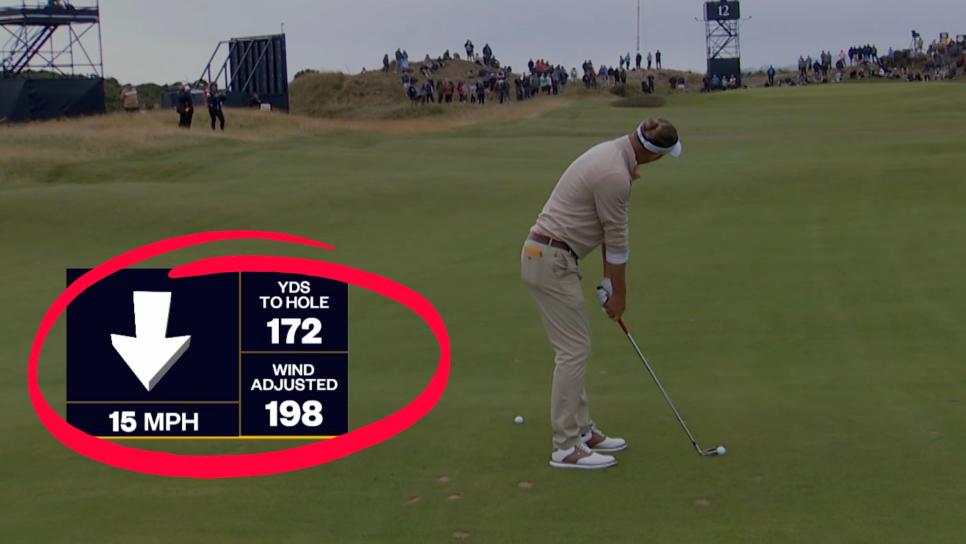British Open 2024: 5 things I learned from pros at Royal Troon – Australian Golf Digest

- by Admin
- July 22, 2024

If I handed you a blank piece of paper, and asked you to plot every hole of your home course onto it, could you do it? And if you did manage it, would it make some level of intuitive sense at the end?
That, more than anything else, sums up the defining quality of great links courses like Royal Troon.
Royal Troon sends six holes out along the ocean, six holes around, then six holes back.
Fellow former Open host Turnberry, which may have become my favorite golf course of all time when I played it last Monday, sends its holes along the ocean in a series of pairs.
Its nearby Open Championship brethren, Prestwick, was designed to loop out and back a couple of times.
Western Gailes, another fabulous golf course just down the road, is routed similarly.
Whereas the land that hosts golf courses in the U.S. Open is treated like a blank canvas, links courses are melded into their environment. One’s not better than the other, they’re just different. In America, the courses are built to impose your game onto them. At the Open, the task is navigating whatever happens to be in front of you that week, that day, that hour. It’s rarely fair, and never easy.
They each reflect the culture they exist within, and the types of champions they produce.

Kevin C. Cox
1. Conditions change—but swing feels don’t
I found it fun, but not a coincidence, that two Feel vs. Real Hall-of-Famers found themselves firmly in contention during the 2024 Open Championship. There are no two golfers who make more apparent practice swings than Justin Rose and Billy Horschel.
There’s a good reason why.
Links golf does strange things to golf swings, especially at a place like Royal Troon where you can spend hours at a time hitting balls against the same wind direction.
The wind causes players to creep the ball position back in their stance. The cold can make swings shorter. The rain can stop golfers from moving as well.
Those tendencies exist for other players as well as for Rose and Horschel, but unlike many of their competitors, you couldn’t spot any real difference in their approach. They were making their same, strange practice swings. Rose’s is designed to keep his arms dropping to the inside on the downswing; Horschel to keep his arms in front of his body on the backswing.

Pedro Salado
In some ways, it was the repetition of these odd-looking rehearsals which gave them a sense of comfort in the severe conditions, and heightened pressure. The wind may be trying to distract them, but they were focused on what they were trying to do.
Feel isn’t real, but in order to get your golf swing in a good place—and keep it there—there’s only one way to do it, and that’s by over-exaggerating what you want.
2. A guide to playing scrappy golf
When Open Championships are plagued with severe weather, they become less a test of your best golf and more of your worst. The task becomes scrapping it around.
So how do you do that? That’s what I set about asking players when the conditions were the most severe. Three themes kept popping up:
Having a go-to shot
“You’ve got to find one shot on the range you can play with it,” said amateur Jasper Stubbs. “It doesn’t matter what, just that you can hit off the tee and into greens. Otherwise it’s not going to end too well.”
Sacrificing some distance to get it in play
“You’ve got to try to get the ball in the fairway. Hitting a shot that will get you in play off the tee,” adds Justin Rose. “From the rough, in bad conditions, you’re not going to reach the green.”
 The goal: Moving the ball forward
The goal: Moving the ball forward
“As long as you’re moving the ball forward, keeping holes in front of you, dodging bunkers, leaving yourself easier chips…you don’t have to be perfect out here to play good golf,” says Xander Schaffule.
Adam Scott agrees:
“It can actually be pretty easy to scrap it around links golf if you try to leave yourself a lot of 40-footers,” he says. “Though you’re not going to make many of those.”
3. The art of golf’s bunt shot
If there’s one thing that the rest of us can learn from pros in the Open Championship, it’s that the easiest way of navigating the wind is by clubbing up, and swinging easy. Reducing your clubhead speed is the easiest way of reducing your ball flight and backspin. Yes, you can put the ball back in your stance, and shorten up your swing, too. But swinging easy when it’s breezy remains the central piece of advice, and some pros took this so seriously that they actually reduced the loft on their clubs so they could swing softer and the ball would go the same distances they were accustomed to.
“I enjoy hitting little bunt shots,” says Billy Horschel. “I get tired of golf where you’re making full swings and you lean into a certain number and it stops. I like it when you have to be creative and find a way to get around the golf course.”
4. Know the wind penalty
Sky Sports’ “adjusted wind” graphic was really cool and really helpful. I wrote about it at the time, but I wanted to reiterate the takeaway: For each mph into wind you face, it adds about 1.5 yards. A handy rule of thumb to keep in mind, the next time you feel a bit of breeze blowing into your face.
 5. Keep score of your mental mistakes
5. Keep score of your mental mistakes
More than anything else, the elements get you thinking about stuff. About what may happen; what you want to happen. And thinking too much over the ball is what leads to great players hitting not so great shots, like this…
“It’s such a cliche,” adds Nicolai Hojgaard, “But being present with the shot you’re hitting, not thinking about the result, is so important.”
The most common way pros try to prevent this is by keeping track of those shots gone wrong. Not of the bad shots, but of the bad processes that led to those shots.
“It’s definitely annoying when it happens, but I try to learn from it each time it happens,” says amateur Jasper Stubbs. “I have a mental coach and after the round we go through each of those shots, and discuss what went wrong.”

Claret jug in hand, Xander Schauffele says he does something similar. He and his caddie keep a scorecard of all the times he gets so angry after one shot that it affects the next one.
“I found that my rounds where I got angry, like truly deep down angry, and my mistakes started compounding,” he says. “Austin [Xander’s caddie] is like an elephant; he keeps track of all these things.”
It’s too high a standard to expect yourself not to get angry, or unfocused, in the first place. But learning from those mistakes, getting incrementally better—that’s how you get to the point where you have a claret jug sitting in front of you.
This article was originally published on golfdigest.com
The Latest News
-
October 29, 2024Cummins eyes elusive win against ‘under pressure’ India | cricket.com.au
-
October 29, 2024‘Australia will win, but watch Team India go!’ – Matthew Hayden on Border Gavaskar Trophy | Cricket News – Times of India
-
October 29, 2024Matthew Wade: Australia wicketkeeper-batter takes up coaching role after retiring from international cricket
-
October 29, 2024Brother of Aussie NBA superstar Ben Simmons sends blunt message to critics as he slips back into Australia after ugly row over unpaid bills
-
October 29, 2024Child killed and three others injured after car crashes into Australian school





